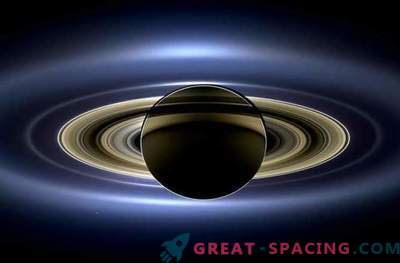
The Cassini spacecraft successfully completed the first stage of the dive between the planet and the rings on April 26 and sent the first signal to Earth. Now it transmits the collected data.
“Cassini continues the journey and discovers new wonders. This proves that human curiosity can bring us to the unthinkable distance, ”said Jim Green, director of planetary science at NASA.
Entering the gap, the device approached 3000 km above the surface, where the air pressure is 1 bar (sea level on Earth), and within 300 km from the innermost visible edge of the rings.

The image shows unusual features of the atmosphere of Saturn. Taken on April 26, 2017 during the first Grand Final Cassini.
The team believed in the success of the operation, but nevertheless took additional precautions during the first dive, since the region was not previously explored.
“No spaceship has ever come so close. We relied only on calculations and theories, hoping that the gap would be the same as in other rings, ”says Cassini manager Earl Maiz of the Jet Propulsion Laboratory of NASA.

Features of the atmosphere of Saturn The gap between the rings and the upper part of the atmosphere is 2000 km wide. The models assumed that if there were annular particles in the intersection area, they would reach tiny sizes. The device flew at a speed of 124,000 km / h relative to the planet, so small fragments could potentially turn off Cassini.
To prevent this scenario, a huge dish-shaped antenna (4 meters wide) was used as protection. This provided security, but made it impossible to communicate during the passage on April 26. Cassini was programmed to collect scientific data in close proximity to the planet, and after 20 hours he turned to Earth to send a signal.
Cassini’s next dive through this gap is scheduled for May 2.

Cassini started in 1997 and in 2004 arrived at Saturn. On April 21, the vehicle made a close flight to Titan, the largest moon, and embarked on a series of 22 dives — the Great Finale. The data of the first pass will help the engineers to understand what to prepare for and how to protect the device. September 15, 2017, Cassini will complete his mission and break on the surface of the planet.











































